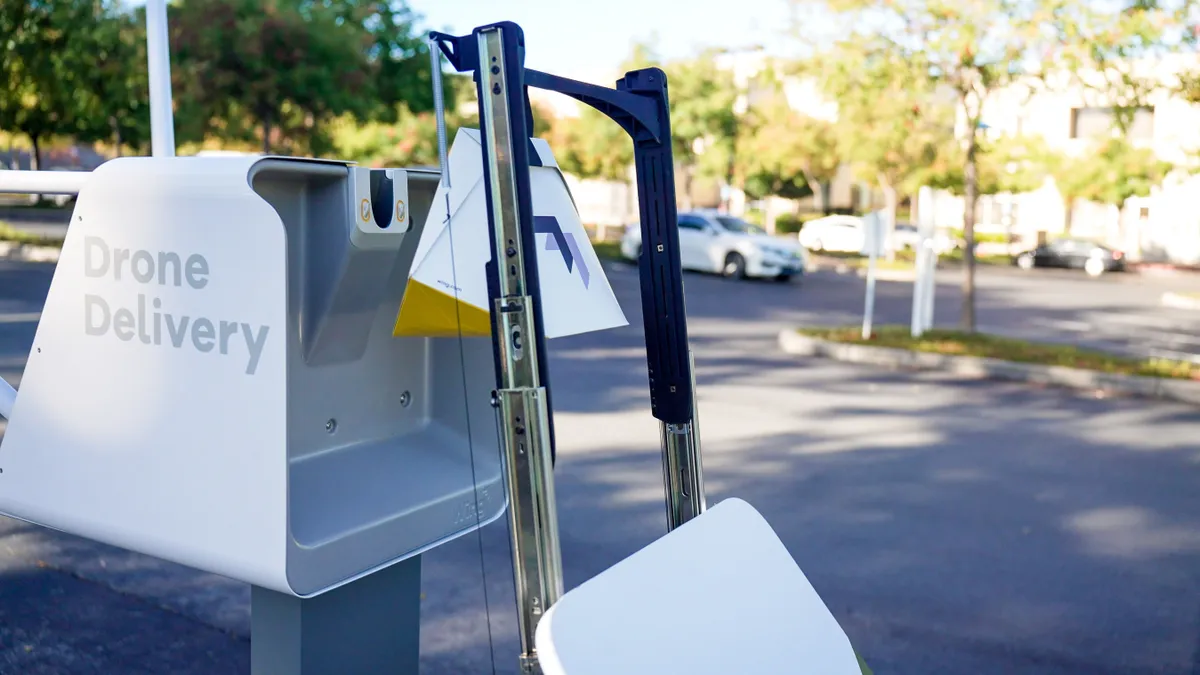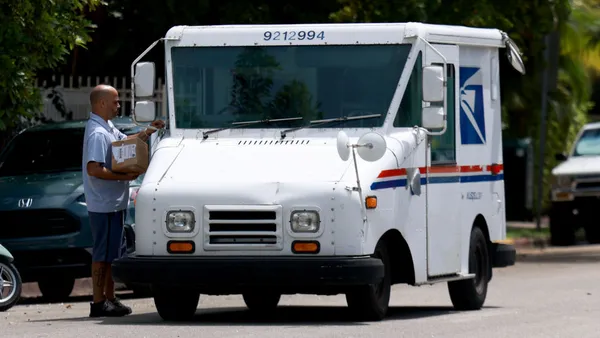October has been an eventful month for the drone delivery industry.
The emerging transportation method for food, convenience products and medicine has a ways to go before establishing itself as a mainstay in the last-mile delivery space. But drone operators are working to change that, with multiple companies revealing expanded services and capabilities this month.
Here's a roundup of four announcements from Wing, Matternet and DroneUp that aim to advance the prevalence of drones in U.S. skies.
Wing gets bigger in Texas
Aviation company Wing, a subsidiary of Google parent company Alphabet, deepened its collaboration with Walmart by launching a drone delivery service at one of the retailer's Denton, Texas, stores on Oct. 3. Customers can use the service for select, smaller items destined for an address within about six miles of the store on South Loop 288.
The drones are expected to fly at an elevation of 200 to 250 feet between 10 a.m. and 6 p.m. local time, the city of Denton said in an Oct. 2 news release. Hours will adjust with daylight saving time to avoid after-dark deliveries.
The Denton service debut adds to Wing's rapidly expanding coverage in the Dallas-Fort Worth metroplex since it teamed up with Walmart last year.
Nate Milner, Wing's head of operations, said in an October blog post that this past summer, the company launched a new drone delivery facility in the area every two weeks. Wing is "planning an even faster pace of expansion for the rest of this year and into 2025," Milner added.
Robots and drones work in tandem
Wing isn't only teaming up with Walmart to expand its drone delivery capabilities. The company announced a pilot partnership on Oct. 1 with Serve Robotics, known for its sidewalk-roaming delivery robots.
Through the partnership, select Wing deliveries will be picked up by a Serve robot from a restaurant's curbside and ferried to an "AutoLoader" station a few blocks away. A Wing drone will then pick up the payload at the AutoLoader and transport it to its end destination.
Avoiding street traffic and reducing delivery-related vehicle emissions are among the benefits robot-to-drone delivery provides, according to the announcement.
"We're excited to partner with Wing to offer a multi-modal delivery experience that expands our market from roughly half of all food deliveries that are within 2 miles of a restaurant, to offering 30 minute autonomous delivery across an entire city," said Ali Kashani, CEO and co-founder of Serve Robotics, in the announcement.
Drone delivery comes to Silicon Valley
Matternet, a developer of commercial drone delivery systems, has entered the drone delivery fray by launching its first service in the California cities of Mountain View and Sunnyvale, according to an Oct. 2 news release. The company had been running a pilot program since Aug. 30.
The company's drone delivery process is fully automated, with drones loaded at a central hub before flying to customers' homes. Once at the destination, a drone descends above the customer drop zone and releases the package via a tether before returning to the hub for another delivery.
"The program lays the groundwork for a broader roll-out as Matternet prepares to expand operations of its home delivery platform in collaboration with major logistics partners," Matternet said in the news release.
DroneUp tech to accelerate deliveries, extend range
DroneUp has bolstered its technology portfolio to reduce costs associated with drone delivery, according to an Oct. 8 announcement. The company said the following initiatives are contributing toward its goal of reducing the cost of a drone delivery to $7:
- Software that allows drones to autonomously determine actions, helping pilots focus on exceptions to the flight process rather than every detail. "This capability is essential for managing multiple drones and enabling scalable operations," DroneUp said.
- A custom winch design that offers improved durability for continuous use and faster speed to complete more deliveries in less time.
- A custom battery design that features fast charging capabilities, advanced airflow optimization to manage heat distribution and higher energy density. The design is expected to extend DroneUp's flight range.
Editor's note: This story was first published in our Logistics Weekly newsletter. Sign up here.















